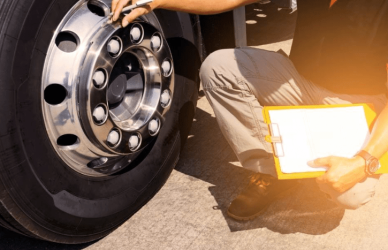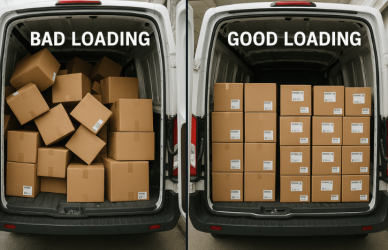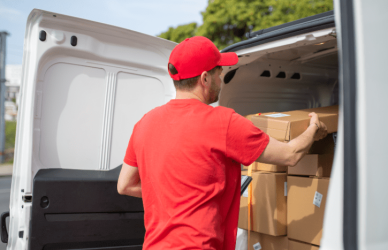2022 was a record-breaking year for transportation industry fuel prices with the average cost of diesel in the U.S. reaching an unprecedented $4 per gallon, forcing companies to be extra vigilant when it comes to preventing costly mistakes.
Solar Transport, a Des Moines, Iowa based fuel hauler with a fleet of 120 trucks and 220 drivers serving the Midwest and Rocky Mountain regions saw its cost of delivery errors soar last year. According to Director of Driver Services, Jason Jones, this trend was projected to reach nearly $2 million in fuel delivery errors in 2022 if no changes were made.
According to an industry study on tank truck usage patterns in the U.S., the unintended mixing up octane types at a felting site happens once in every 14,000 deliveries and diesel/gasoline combination mistakes are seen approximately once per 45,000 drops nationwide.
Solar Transport made 126,713 deliveries in 2022. Despite the numerous safety measures in place, fuel delivery drivers are still susceptible to making errors—like cross-drops when they load wrong products into tanks. Jones explained that this is an unfortunate reality in the fueling transport industry – these human error mistakes are bound to happen.
After introducing automated workflows, the company has noted a 52% decrease in cross drops and a dramatic cut from 56% to 23% turnover rate.
“The driver’s job is very manual in terms of when he gets to the location. He has to hook up all the hoses to the appropriate compartment, make sure that he loads it correctly and so forth. There are a lot of steps that take place for delivery,” Jones said. “We had an overabundance of missed pulls (when a fuel hauler pulls the wrong product or the wrong supplier for the customer directive), which led to cross-drops, which turns into huge expenses on our behalf. That’s where we wanted to come back and adjust our workflow with how the driver proceeds with the order… We’ve saved thousands, if not millions, of dollars by creating an automated workflow.”
The carrier worked with Motorcity Systems to customize an efficient workflow, lowering cross-drop costs and optimizing the driver experience via cloud integration platform, TORQUE and real time communications app RELAY.
Using the TORQUE application, Solar Transport has integrated operational data and workflows between its Transportation Management System (TMS), ELD telematics, workflow and RELAY dispatch-driver messaging application.
The company’s hours-of-service duty status and vehicle telematics data from Samsara have also been integrated with its dispatch-driver messaging system. This integration gives dispatch better visibility of critical operational, safety, and compliance information.
Solar Transport’s workflow was further tailored based on input from their drivers and is deployed on every driver table via a custom Solar Mobile app.
“Our customized workflow is different from anybody else out there,” Jones said. “The biggest thing I want to point out is when we choose vendors and try to create workflows and understand how they work, we like to involve our drivers, and they’re able to help us out because … they’re the ones that are doing it day in and day out. I think it has paid huge dividends to be able to include these drivers in our discussions and in our game plan.”
A driver for the company recommended adding a step in the app that the carrier had never had before, but included in the app. The suggestion was to have a step where the driver reposts back to dispatch what product was loaded so it could be confirmed that’s what was ordered prior to the driver taking it out for delivery. According to Jones, this step has prevented loading errors that previously weren’t being caught until the driver had already dropped the wrong product into a customer’s tank.
The cost to undo this kind of error once it’s been made is high and the process extensive. A cross- drop has far-reaching consequences and costs. Once this type of error occurs, it shuts down the pumps at the store, rendering them unable to sell product until the issue has been fixed. The driver has to take time out of their schedule when they would otherwise be making another deliver to pump out 20,000 gallons of contaminated project, and drive it as far as 300+ miles to be recycled. This also takes that equipment out of service, and the product still must be replaced at the store.
“By us creating this workflow, it puts a driver in a better position and provides the checks and balances necessary to really avoid the huge errors of the $80,000 to $100,000 errors that we’ve experienced in the past,” Jones said.
Drivers now benefit from streamlined efficiency with an automated workflow that gives them access to all relevant information about their orders before and during each shift. And, depending on the day’s jobs, drivers can haul anywhere between one and seven loads per trip! The app shows pick-up/drop-off locations across maps of stores complete with tank placement markers, hazard warnings, exit routes – plus easy inventory tracking and special instructions for every order.
Drivers can now begin their journeys with greater efficiency – upon selecting a load from the workflow, they’re immediately checked in and communicated to dispatch. Moreover, stats like arrival and departure times at both loading/dropping locations are being monitored for up-to-date insights into drivers’ trips back to the office. At terminals or other sites of product pickups, drivers have access to immediate validation that indicates which goods were loaded before continuing on towards delivery destinations such as convenience stores.
At the store, they follow the workflow: stick-measure the tank to confirm the inventory and that it will fit, and validate color-coded tags on the tanks to ensure they’re dropping in the proper area. Upon completion of a drop, they fill out a form in the app that includes critical details such as confirming they stuck the tank, if they had a wait time, or whether they had to move the truck to access another drop.
Once the process is complete, the automated workflow triggers the next load, and the steps are repeated. Drivers aren’t able to work on another load until the previous one has been finished.
According to Jones, the greatest benefit of the workflow is the real-time updates to load chances. Motorcity Connects with the carrier’s TMS and notifies the drive of any changes the moment they are made.
“There’s a constant sync of letting the driver know if there was any changes made to a particular order, where before we could change something and drivers wouldn’t know about it,” he said. “All of a sudden, they’ve delivered to the wrong location or delivered the wrong product because they didn’t have the update.”
In addition, the customer will also receive real-time updates, which Jones says has driven up their customer satisfaction as well.
“If we’re able to create capacity with our customers and have the trucks and drivers available, that gives us the flexibility and capacity to bring on new customers, which we’ve been able to add,” Jones said.
With the introduction of improved driver workflows, feedback from drivers has been overwhelmingly positive. Not only have training and delivery processes become simpler, but thanks to site maps and increased visibility into inventories on-site at locations, it’s easier than ever for drivers to determine load capacity before arrival.
Jones indicated that the company is working towards a greater decrease in cross-drops and making additional investments in technology in an effort to improve both driver and customer satisfaction.
They’ve also recently started using an imaging app that allows deriver to scan their paperwork from their truck which then gets entered into the automated workflow, sharing that information electronically with both the customer and the office. They’ve also got a few other things in the work that will make drivers’ lives easier and help to reduce errors.
“We’re going to continue to push, providing these drivers with the resources and the tools necessary to do their job,” he said.
Source: CCJDigital








